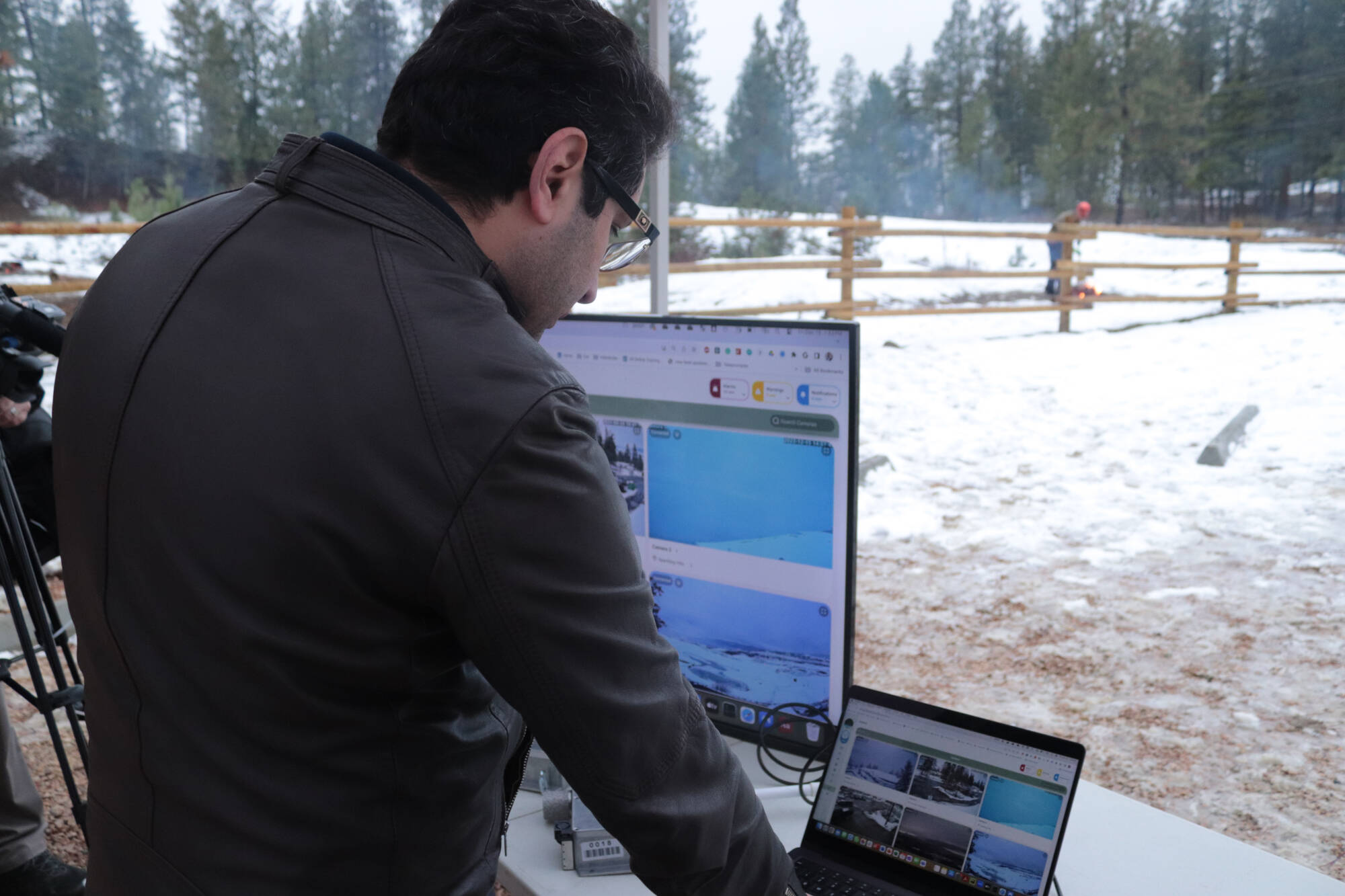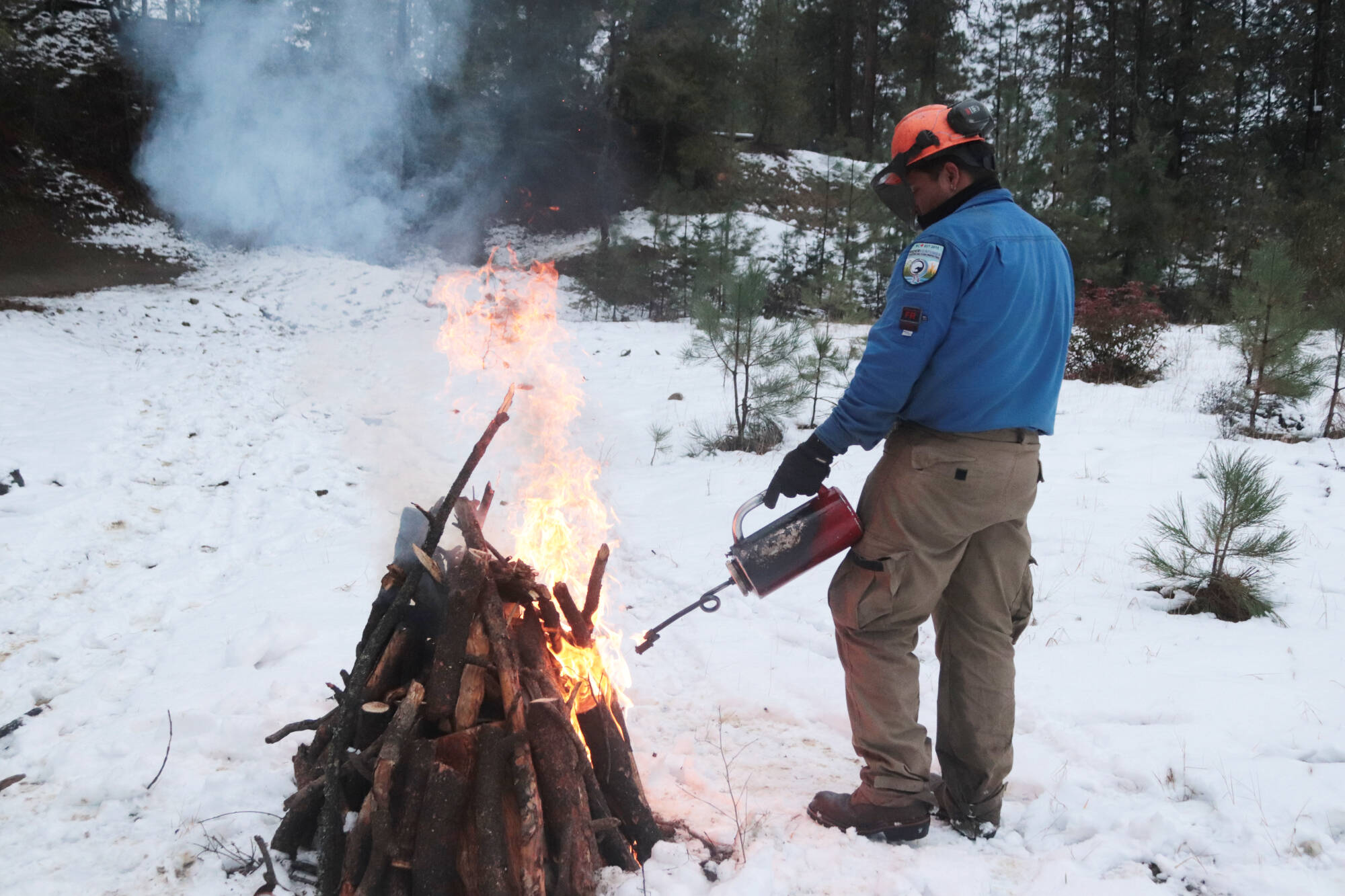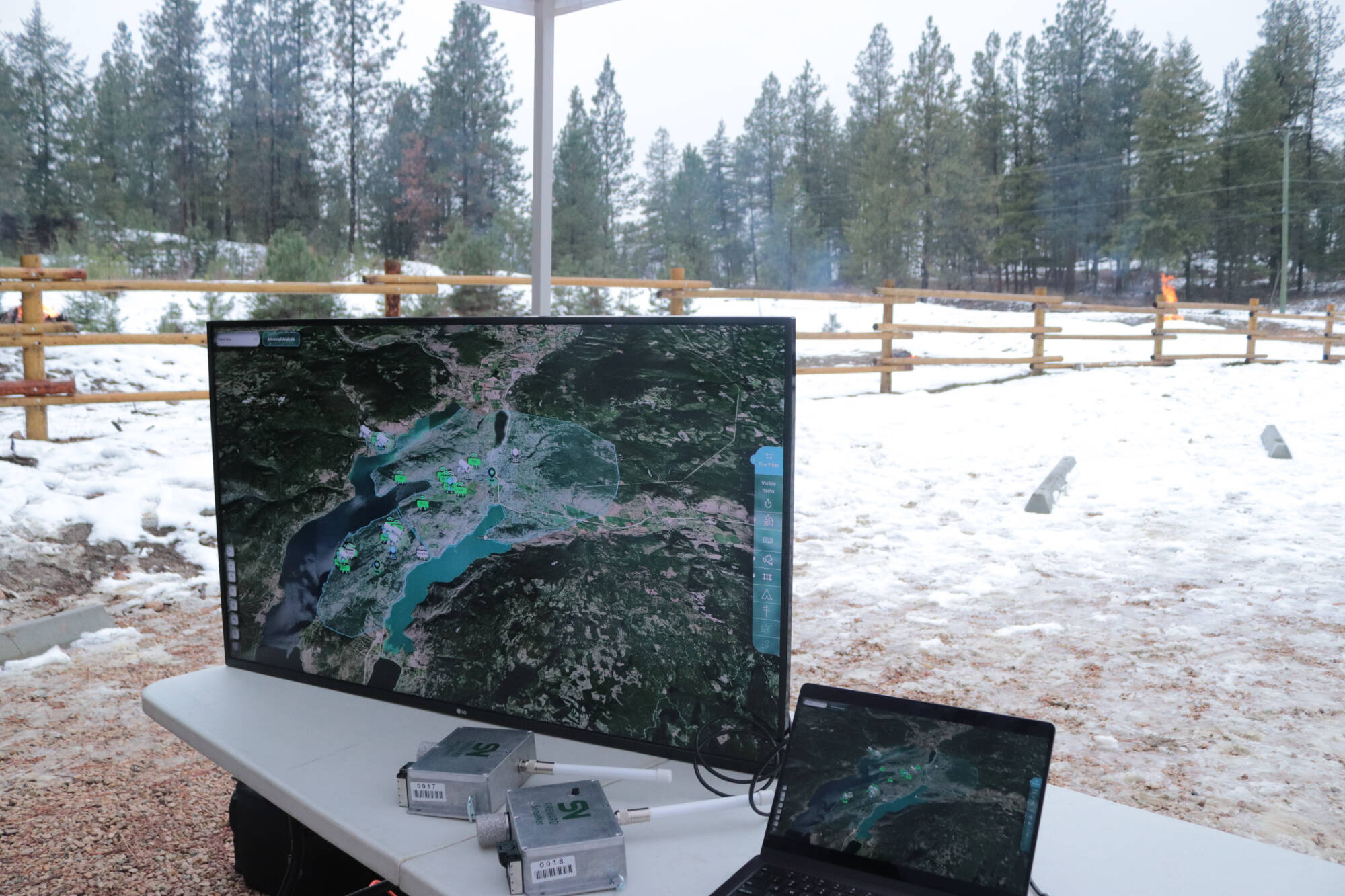A handful of small fires were ignited in Vernon’s Ellison Provincial Park on Friday, Dec 15 but they weren’t lit as part of a fuel mitigation effort. Rather, they were lit to test a new technology that will help detect wildfires faster.
The SenseNet early wildfire detection system is cutting-edge technology that involves installing sensors and cameras in areas with a high fire risk. The sensors detect gases such as C02 and methane, measuring whether the gases are above or below normal levels, and send data to fire departments in a matter of minutes so that firefighters can be deployed sooner than if the fire was spotted by a person and called in.
SenseNet has been developing the technology over the last four years, and CEO Hamed Noori has been working with the City of Vernon and Vernon Fire Rescue Services since August 2022 to get the system up and running in town.
With sensors installed around Vernon including high risk areas like Ellison Park and Eastside Road, and with successful tests over the last few days, the system has now been validated and is ready to protect the community.
“Today was actually the final validation of the system,” Noori said at Ellison Park on Friday as the controlled fires burned in the background. “It’s literally going to save lives, so we didn’t want to rush it.”
Noori explained that if a fire is within 100 metres of a sensor, the sensor will detect it in a matter of a couple minutes. If the fire is 500 metres to one kilometre away, it will typically be detected in about 5-10 minutes.
Wes Brassard, FireSmart coordinator with Vernon Fire Rescue Services, called the new fire detection system a “real big game changer.”
He said the system will allow crews to know how best to respond to a wildfire, in addition to being notified early.
“Having the camera partnered with the sensors, it’s a great collaboration between the two systems, and so we have the ability to view these cameras from an iPad or from our TV at the fire hall and then we can be making decisions based on what we’re seeing before we have crews on the ground,” Brassard said.
A wildfire that sparked in Ellison Park this past summer could have been an early chance to test the system, but Brassard said the system was still in the “learning stage” and wasn’t operational at that time.
“We went back in the data and did notice that there was an anomaly detected roughly 20 minutes before the first report to wildfire or 911, but as we were still in the testing stages we weren’t alerted to it,” Brassard explained.
But if a fire were to break out in Ellison after Friday’s test, the hope is that firefighters will be alerted by the system.
“The most crucial thing that we have out there is responding to a fire in a timely manner, and as you can see we’re getting more devastating wildfires, more frequent wildfires and more wildfires displacing residents. So the quicker we can respond to something, the faster we can put it out or control it or make appropriate operational decisions, whether that’s based on evacuations or procedural operations decisions,” said Brassard.
Brassard also noted the system isn’t meant to replace the tried and true method of having people report wildfires, but it’s another tool in the fire department’s arsenal.
“It’s nice to see technology step up and help us.” he added.
SenseNet has launched several pilots and installations in B.C., including Williams Lake, Noori said, and the technology could soon become more widespread.
Noori said the sensors are battery powered, and the batteries will last 5-10 years depending on the frequency of data collection.
So far roughly 60 sensors have been installed in Vernon and roughly 100 more will be installed in the near future, Brassard said.
“We’d ideally like to see them everywhere, and we will eventually, but (for now) we will concentrate on high risk areas.”
READ MORE: More than 1,000 properties at geohazard risk in wake of B.C. wildfire
READ MORE: $50K fund to assist wildfire-affected businesses in North Shuswap




